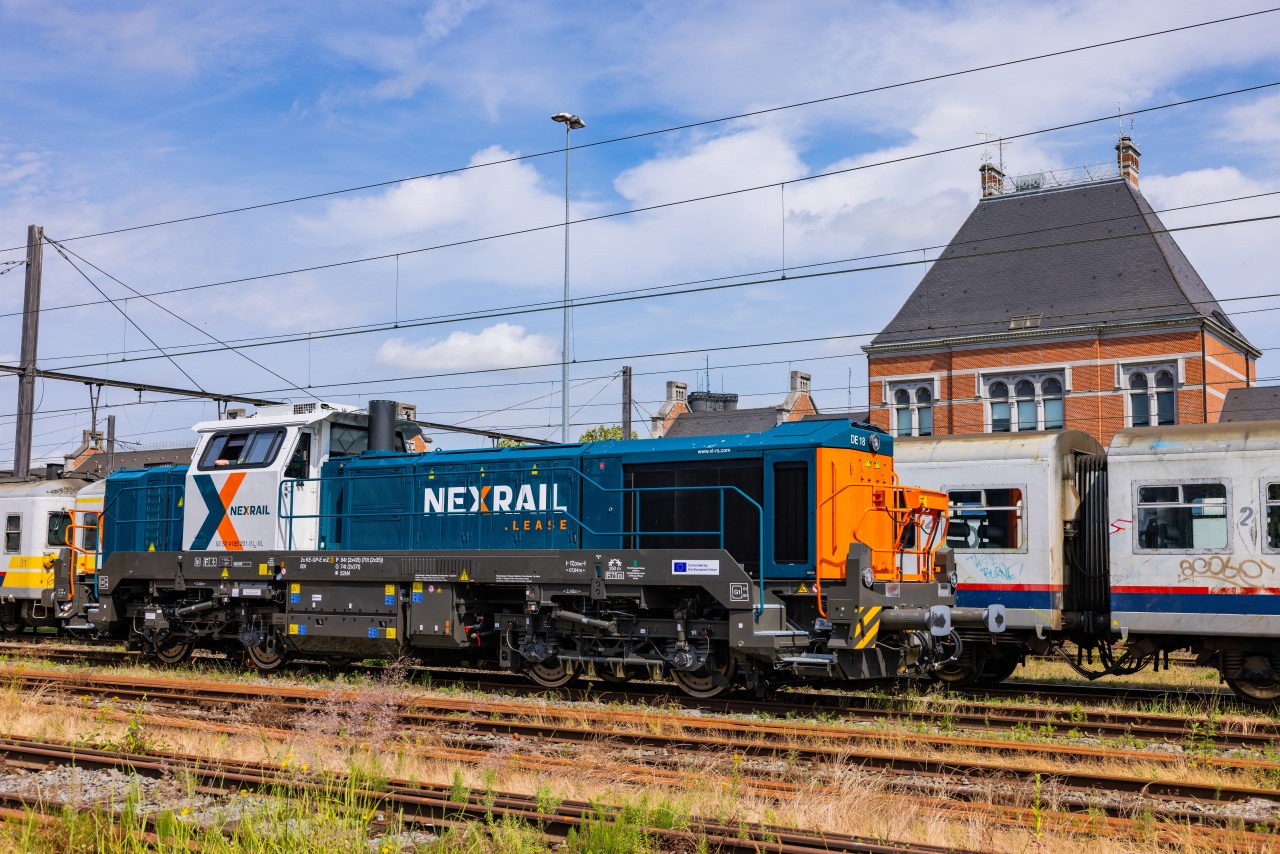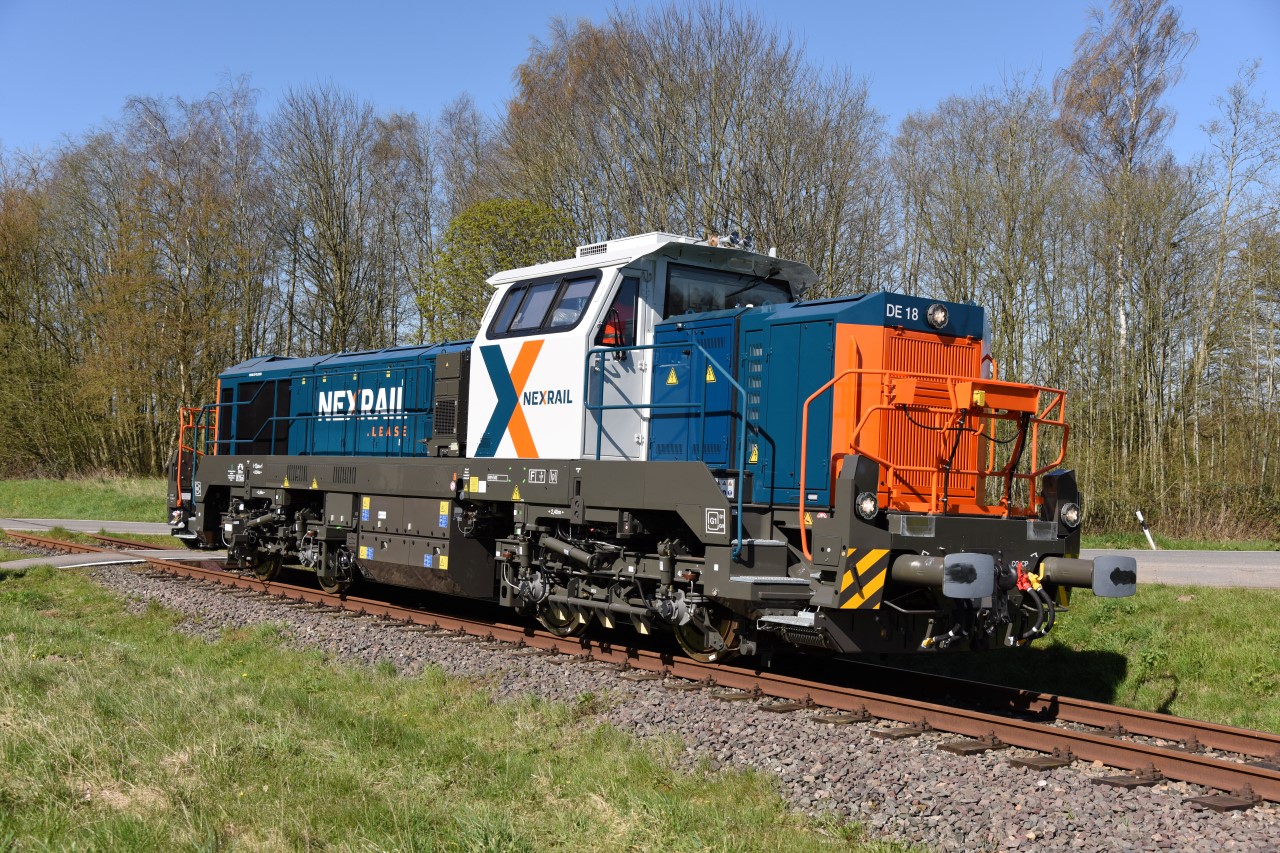In today’s rapidly evolving rail transportation landscape, the industry is undergoing a transformative revolution—one that companies like Nexrail, a leading European locomotive leasing firm, are actively embracing. With climate change, rising sustainability mandates, and the global push for decarbonisation, hybrid and battery-powered locomotives have become essential. Nexrail is positioning itself at the forefront of this green transition, notably through the deployment of hybrid locomotive technologies such as the DE18 Stage V Smart Hybrid (SH), and a clear ambition to achieve zero emissions.
“Rail is already the greenest mode of land transport,” said Michel Mink – van Delft at a recent industry forum.
“But that doesn’t mean we can rest. The goal is not just lower emissions—it’s zero emissions. And to get there, we need bold investment, smarter locomotives, and a fresh mindset.”
Nexrail’s role in the green rail revolution
Founded to challenge the status quo in rolling stock leasing and management, Nexrail has quickly earned a reputation for innovation and responsiveness to the evolving demands of operators and regulators. Based in Luxembourg and operating across Europe, the company manages a growing fleet of locomotives designed to reduce emissions and enhance operational efficiency.
Under the commercial leadership of Michel Mink – van Delft, one of Nexrail’s flagship initiatives is the deployment of DE18 V SH hybrid locomotives, built by Vossloh Locomotives. These machines represent a shift towards sustainable, flexible traction that meets both operational and environmental performance goals. The rail sector faces significant pressure to decarbonise, with the European Union setting a target to reduce transport emissions by 90% by 2050. Rail, already emitting 70% less CO2 per passenger-kilometre than road transport, per 2024 Eurostat data, is a critical focus. However, diesel locomotives still account for 30% of Europe’s rail energy use, highlighting the need for hybrid solutions like those Nexrail champions.
The company’s rapid rise since its 2021 launch reflects a broader industry shift. Unlike traditional leasing firms focused solely on diesel fleets, Nexrail integrates sustainability into its business model, responding to regulatory mandates like the EU’s Stage V emission standards, which cap nitrogen oxide and particulate emissions. This positions Nexrail as a key player in a market where freight rail alone could cut 2 million tonnes of CO2 annually per 1% modal share increase, according to UNIFE estimates.
The DE18 V SH: A smart hybrid solution
The DE18 V SH isn’t just another diesel locomotive—it’s a “smart” hybrid, equipped with a cutting-edge Stage V engine, energy storage systems, and the ability to run fully on battery power in certain scenarios. Its modular design enables switching between diesel-electric and battery-electric modes, significantly reducing fuel consumption and noise—particularly important in urban and industrial settings.
Each unit can operate for up to an hour in full battery mode, enabling zero-emission performance for first and last-mile operations—often the most sensitive parts of the rail logistics chain. This feature is especially valuable in countries like Germany and France, where regulatory pressures and public expectations are driving the shift away from diesel. The locomotive’s battery pack, paired with a diesel engine, targets up to 20% fuel savings in typical use cases, such as shunting, while its Stage V compliance ensures it meets stringent EU emission limits—cutting particulate matter by 88% compared to older models.
“The DE18 SH is a bridge between the legacy of diesel and the promise of fully electric rail freight,” explains Mink – van Delft. “It gives operators the flexibility they need today while laying the foundation for tomorrow’s zero-emission operations.” This flexibility is critical as Europe’s rail network, spanning 220,000 km, includes many non-electrified lines—40% in 2024, per UITP data—where hybrid technology offers a practical interim solution. The DE18 V SH’s authorisation for use in France, Belgium, and Luxembourg by late 2024, with Germany following in Q3 2026, underscores its market readiness, supported by ETCS Level 2 upgrades for enhanced safety and interoperability.
Roadmap to zero emissions
Nexrail’s broader strategy includes retrofitting legacy fleets, investing in modular hybrid technologies, and forging partnerships across the sector. As Mink notes, innovation isn’t only about new builds—it’s also about unlocking more value from existing assets.
Nexrail’s phased approach to decarbonisation includes:
• Short-Term: Deploying hybrid units like the DE18 V SH to reduce emissions and enhance operational agility.
• Mid-Term: Expanding battery-electric range and storage to support longer zero-emission journeys.
• Long-Term: Transitioning to fully battery-electric locomotives as infrastructure and technologies mature.
Strategic partnerships—with OEMs like Vossloh, operators, and public bodies—are central to Nexrail’s approach. “This isn’t something one company can achieve alone. Building a zero-emission rail network is a collective effort,” Mink emphasises. Collaborations extend to certifying fleets for HVO (hydrotreated vegetable oil) biodiesel, which cuts CO2 by 90%, and exploring dual-mode technologies with firms like Stadler, announced at InnoTrans 2024. These efforts align with the EU’s EUR 2.54 billion rail tech fund for 2028–2034, which prioritises electrification and hybrid solutions.
Economic and Environmental Impacts
The shift to hybrid locomotives like the DE18 V SH could yield significant benefits. Economically, reduced fuel costs—potentially EUR 50,000 per locomotive annually based on 20% savings—could lower operating expenses for freight operators, many of whom face tight margins in a competitive market. Environmentally, the technology could reduce rail’s 1.4% share of EU transport emissions by an additional 5% by 2030, per European Commission projections, supporting the 90% reduction target. This is particularly relevant for urban areas, where noise reduction—up to 10 decibels with battery mode—improves quality of life, a priority in cities like Paris and Berlin.
Looking Ahead: A Sustainable Rail Future
Under Michel Mink – van Delft’s direction, Nexrail’s ambitions reflect a wider shift in the European rail industry. Hybrid locomotives like the DE18 V SH are not just concepts—they’re already in service, with more on the way. Sustainability is no longer just a buzzword; it’s becoming operational reality.
By offering hybrid and battery-powered locomotives—cleaner, quieter, and smarter alternatives to diesel—Nexrail is driving innovation and environmental stewardship. Unlike conventional diesel-electric engines, these next-generation machines leverage renewable energy and advanced battery systems to significantly reduce emissions. Coupled with developments in battery storage, AI, predictive maintenance, and automation, they also offer increased cost-efficiency and reliability.
As 2030 approaches—a key milestone for EU climate goals—Nexrail’s pragmatic, scalable model offers a market-ready pathway to greener freight and infrastructure services. “Innovation is not just desirable—it’s essential,” concludes Mink – van Delft. “And we’re not waiting for the future. We’re building it now.” The company’s roadmap, backed by industry partnerships and regulatory support, positions it to lead Europe’s rail decarbonisation, though success will depend on overcoming infrastructure and funding challenges in the years ahead.
Share on:





